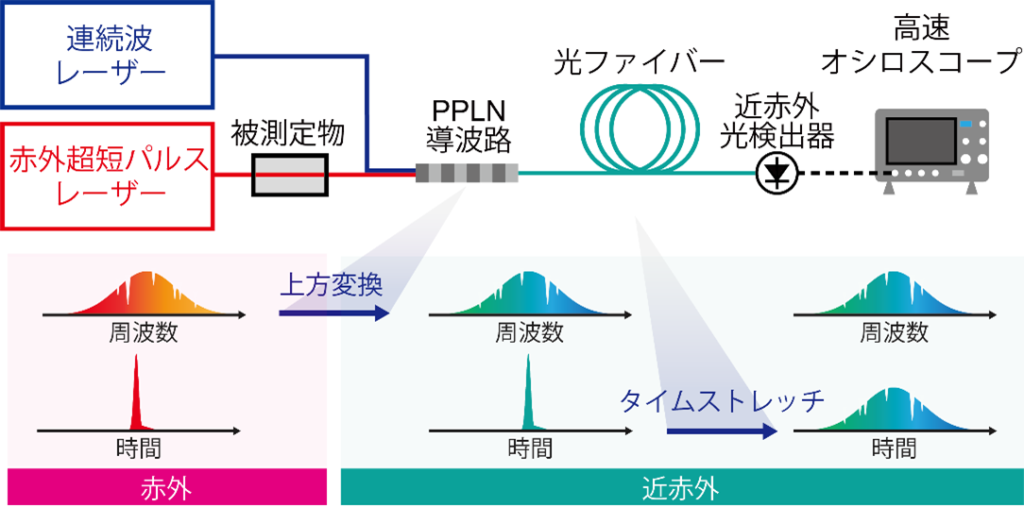Detecting the molecular vibration information faster by “stretching” time
News 2023/03/10
High-speed measurement confronts the extreme speed limit when the signal becomes comparable to the noise level. In the context of broadband mid-infrared spectroscopy, state-of-the-art ultrafast Fourier-transform infrared spectrometers, in particular dual-comb spectrometers, have improved the measurement rate up to a few MSpectra s−1, which is limited by the signal-to-noise ratio. Time-stretch infrared spectroscopy, an emerging ultrafast frequency-swept mid-infrared spectroscopy technique, has shown a record-high rate of 80 MSpectra s−1 with an intrinsically higher signal-to-noise ratio than Fourier-transform spectroscopy by more than the square-root of the number of spectral elements. However, it can measure no more than ~30 spectral elements with a low resolution of several cm−1. Here, we significantly increase the measurable number of spectral elements to more than 1000 by incorporating a nonlinear upconversion process. The one-to-one mapping of a broadband spectrum from the mid-infrared to the near-infrared telecommunication region enables low-loss time-stretching with a single-mode optical fiber and low-noise signal detection with a high-bandwidth photoreceiver. We demonstrate high-resolution mid-infrared spectroscopy of gas-phase methane molecules with a high resolution of 0.017 cm−1. This unprecedentedly high-speed vibrational spectroscopy technique would satisfy various unmet needs in experimental molecular science, e.g., measuring ultrafast dynamics of irreversible phenomena, statistically analyzing a large amount of heterogeneous spectral data, or taking broadband hyperspectral images at a high frame rate.
See below for more information.
- Aritcle URL : https://www.nature.com/articles/s41377-023-01096-4
- IdeguchiLab. : https://takuroideguchi.jimdo.com/



